Disengaged employees can cause real damage to a company's productivity and success. We understand that it can be difficult to keep your employees engaged when you don't know where to start. However, after reading this guide you’ll be able to improve employee engagement in your organization for both general and remote workers.
In this guide you’ll discover:
- What is employee engagement?
- What is an employee engagement strategy?
- Why is an employee engagement strategy important?
- What impacts employee engagement?
- Starting your employee engagement strategy
- Examples of employee engagement strategies
- Things to consider with employee engagement strategies
What Is Employee Engagement?
Employee engagement is the emotional commitment the employee has to the organisation and its goals.
This emotional commitment means engaged employees actually care about their work and their company. They don't work just for the pay, but work on behalf of the organization's goals, ultimately creating more success for the company.
It’s important to note that employee engagement is different from employee satisfaction. A satisfied employee will not necessarily put in extra time and effort into their company’s success, they are more likely to just get the job done with no extra effort.
Recommended Reading 📖: Why Is Employee Engagement Important? [Key Benefits]
What Is an Employee Engagement Strategy?
Employee engagement strategies are about creating an environment in which engagement is more likely to flourish. Essentially ‘employee engagement strategy’ means increasing the likelihood that employees will establish a positive emotional connection with your organization.
What actions you decide to take will depend on the size and budget of your company. Depending on the results of your employee engagement survey, there will be certain areas in which your organization will want to focus on. Selecting two or three which are the most urgent is a good place to start.
Why Is an Employee Engagement Strategy Important?
Before we ask ourselves why employee engagement strategies are important, we first need to understand why employee engagement is such a crucial component to a company’s success. Research from Gallup indicates that companies with a highly engaged workforce are 23% more profitable. Not only does engagement make employees more productive, but they feel more inclined to recreate the value they are given.
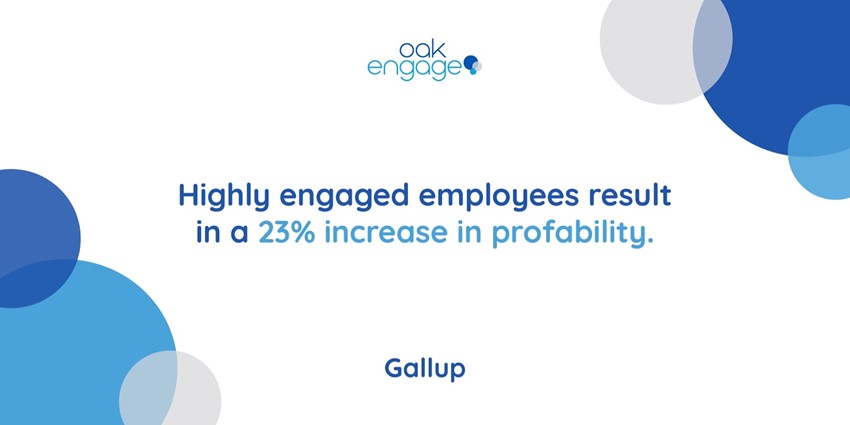
Furthermore, employees that aren’t engaged are more likely to look elsewhere for work and feel dissatisfied in their day-to-day job. Glassdoor shed further light on the issue when they outlined that 53% of employees would be confident in their ability to find another job if they left their current employment. So, if your staff don’t have a good reason to stay at their current place of work, don’t expect them to hang around.
The implementation of an effective employee engagement strategy will:
- Heighten productivity
- Improve employee wellbeing
- Improve job satisfaction
- Make employees happier
- Heighten business connectivity
- Improve employee retention
Companies that fail to take action on low employee engagement will be left ebbing in the wake of those that do.
What Impacts Employee Engagement?
There are 7 main areas that have the most impact on employee engagement. If a company falls behind on any of these areas it could have a negative impact across the company.
1. Communication and Goal Setting
According to statistics, 57% of employees report not being given clear directions and 69% of managers are not comfortable communicating with their employees in general. Effective communication in the workplace is central to all business goals as it:
- Avoids confusion
- Provides a purpose
- Builds a positive company culture
- Creates accountability
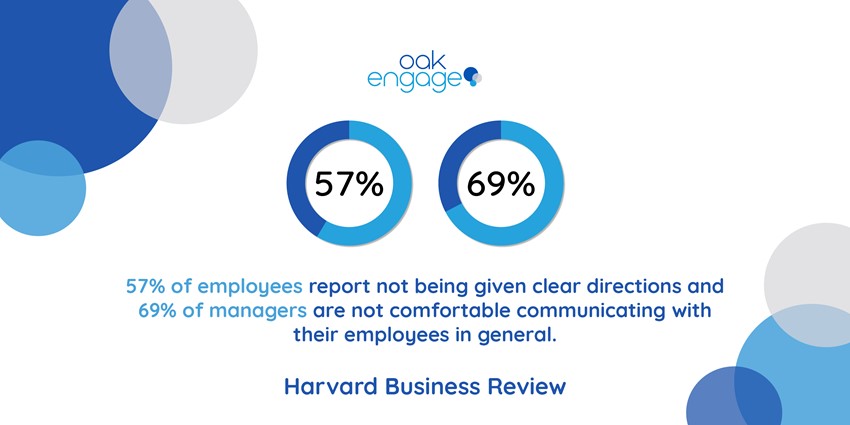
Recommended Reading 📖: 25 Employee Engagement Statistics You Wouldn't Believe
2. Work-Life Balance
Work-life balance is an important aspect of a healthy work environment. Maintaining work-life balance helps reduce stress and helps prevent burnout in the workplace. If you're not providing flexibility in your workplace, it can lead to disengagement and a higher employee turnover.
In fact, according to the State Of The Global Workplace report, actively engaged employees see a 18% decrease in staff turnover.
3. Employee Recognition
Employee recognition in the workplace has to be a vital part of a company's culture. In today’s work environment, the companies with the most satisfied and engaged employees are the ones that have the best training programmes and well-skilled staff.
Most of an employee's motivation comes from getting recognised by their leadership. This means that acknowledging the link between employee recognition and effective management is key when it comes to success.
4. Company Transparency
When transparency is added to the company culture, employees will be more engaged and committed to the vision of the company. According to a 2014 American Psychological Association Survey, 25% of employees do not trust their employer and half of them believe their employer is not upfront with them.
5. Training and Development
Providing training and development to employees allows employers to pinpoint the knowledge and skills they want their employees to have. Without a good onboarding and training strategy, workforces can become disengaged and unproductive.
6. Work Benefits
By adding employee benefits to an organisation, it can increase loyalty, focus and productivity, attendance and optimise recruiting efforts.
60% of employees said having a benefits package is important to their employer loyalty.
7. Autonomy and Challenges
More autonomy correlates to greater job satisfaction. The more control we have, the more motivated we become to succeed. When employees feel their managers trust them with this control, they are confident, loyal and performing.
Starting Your Employee Engagement Strategy
It’s important to bear in mind that every business is different, and that no two companies will have the same requirements. Employee engagement strategies will only ever work if they are designed around the people they are intended to affect.
As you begin to implement your employee engagement strategy, it's important to recognise and figure out the issues within your company. To do this, you must ask your employees what they think needs improving within the workplace.
You should put together an anonymous, coherent and relevant employee engagement survey that's going to provide you with data and answers to help you plan your engagement strategy.
Here at Oak, we understand how important it is to keep on top of job satisfaction and employee engagement, which is why our platform enables you to create Pulse Surveys to gather valuable data from your employees with ease. A Pulse Survey can be created in minutes and enables your employees to give their honest feedback, either named or anonymously.
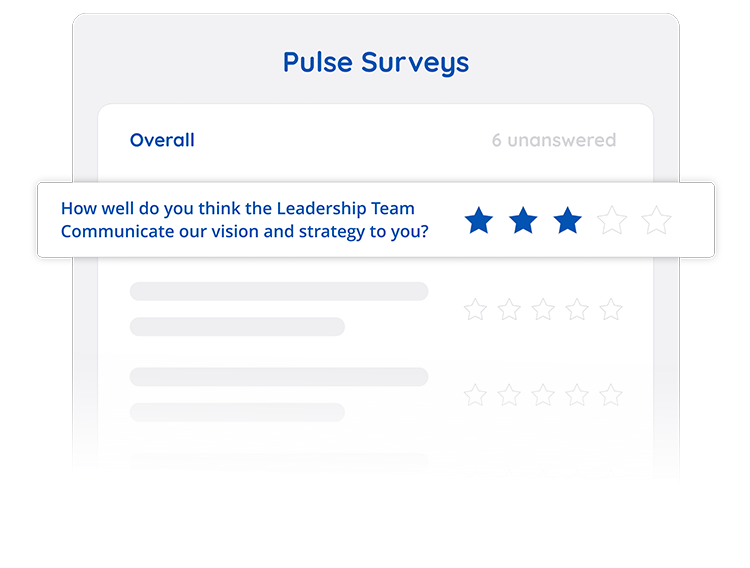 Once you’ve got that crucial feedback and data, you must take action. And when you do act on your findings, remember to keep your employees informed and ask for constant feedback and ideas throughout your journey to tackle better employee engagement.
Once you’ve got that crucial feedback and data, you must take action. And when you do act on your findings, remember to keep your employees informed and ask for constant feedback and ideas throughout your journey to tackle better employee engagement.
Want to take your employee engagement to the next step?
Check out our blog post Employee Engagement Action Plan Guide [FREE Template]
Examples of Employee Engagement Strategies
We know that there’s no one size fits all employee engagement strategy. It’s subjective and depends entirely on the needs of your people. Employee engagement strategy and productivity go hand in hand, so it’s crucial to have an effective staff engagement strategy that’s right for your people and your business as a whole.
Whilst we know that any employee engagement plan is dependent on the specific needs of a company, the list of possibilities are virtually endless. So we’ve put together 6 examples of some employee engagement strategies to get you started. These ideas will help you to construct your action plan and effectively implement it across your organization.
1. Recognise Achievement Often
If an employee feels that their work is not properly recognised, they will quickly lose engagement. After all, what is the point of working hard if no one cares?
Even a simple announcement on your company intranet or on your weekly meetings can be enough to energize an employee and make them feel valued. Management should focus on recognising employees' achievements regularly.
2. Encourage Feedback
One of the best ways to learn is by making mistakes. Failures force us to address our shortcomings and evaluate how we can make an improvement in any future endeavours.
When it comes to employee engagement and an effective staff engagement strategy it’s no different. Encourage employee feedback to see what changes they feel need to be made. Is there something that’s preventing your team from engaging?
By Identifying where hurdles are occurring at the root cause, you’ll be better placed to address them. If they feel like there are areas that need improvement, encourage them to highlight and provide feedback.
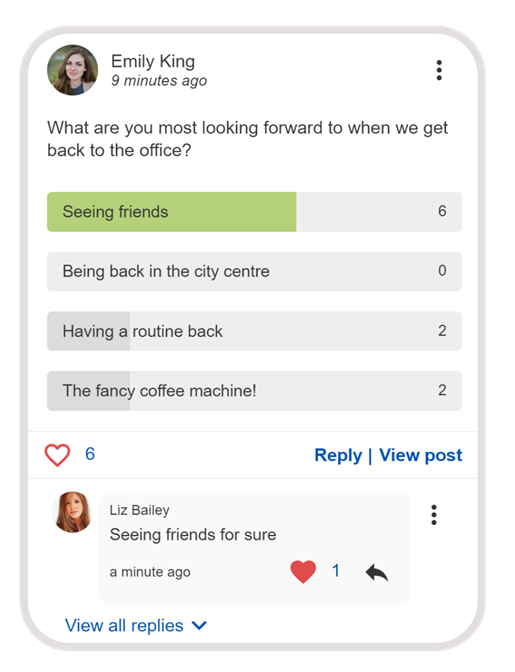 It might be something as straightforward as simplifying work processes or creating a digital space for collaboration and thought processing. Without asking, you won’t know. Without knowing, you can’t make the necessary changes. Hearing the opinions of the very people you are actively encouraging to engage with your company is the first step to making your business a workplace built for your people and not the other way around.
It might be something as straightforward as simplifying work processes or creating a digital space for collaboration and thought processing. Without asking, you won’t know. Without knowing, you can’t make the necessary changes. Hearing the opinions of the very people you are actively encouraging to engage with your company is the first step to making your business a workplace built for your people and not the other way around.
3. Show Employees that you Listen
If you want your employees truly engaged your company has to make the action a priority. If there are concerns or complaints, there should be solutions proposed immediately and acted upon by management.
If your employees feel like they're not being heard and their concerns are being addressed, they will quickly become disengaged, hindering their productivity.
4. Share Ideas
Every department’s skill set is different, but sometimes a successful strategy can be universal. The same applies for a staff engagement strategy. Sharing departmental successes allows you to gauge what’s working and what isn’t on a company-wide level. If something is working well for one team, it’s entirely plausible that it could work well for another. It could be an efficient work process or a way in which information is shared. Peer to peer learning is a great way of not only encouraging inter-departmental engagement but an effective way of strengthening productivity and overall efficiency.
5. Emphasise Respect
This approach is all about the value that each employee brings to the company. You want your workforce to feel that both their opinion and work is respected.
It’s little observations like these that will not only help your employees be more productive but more satisfied in the work that they produce. Engagement is all subjective. This is why it’s important to make sure that your employee engagement strategies are too. Play to your employee’s strengths and support their weaknesses. This way your company can benefit from your employee’s full potential whilst allowing them to develop their skill set at the same time.
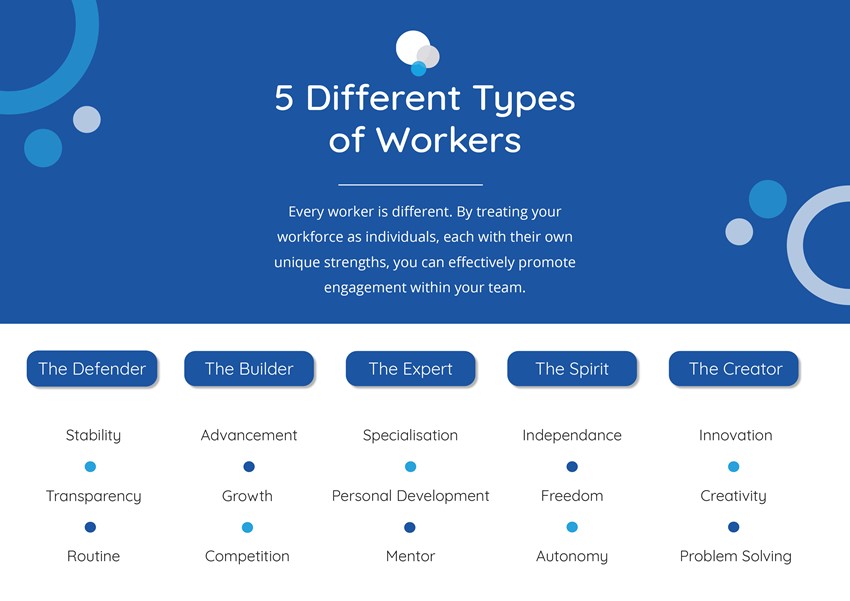
6. Increase Transparency
It’s no use working behind the scenes to increase employee engagement, employees should be updated often on what their leadership is doing and distribute general company updates regularly.
According to Trade Press Services, 85% of employees said they’re most motivated when management offers regular updates on company news.
The benefits of workplace transparency are:
- Everyone is on the same page
- Better performance management
- Improves company performance and goal setting
- Strengthened workplace culture
- Improved communication
- Increased employee engagement
The importance of transparency in the workplace cannot be overstated. With so many powerful benefits, achieving a culture of honesty and openness between leadership, managers, and employees should be every leader’s top priority.
Recommended Reading 📖: 21 Employee Engagement Ideas That WORK
Things to Consider With Employee Engagement Strategies
Now that you’ve figured out what's working for your organization and what you need to improve, it’s time to develop your employee engagement strategy and put it into action. However, there are things to consider when implementing an effective employee engagement strategy.
Take a look at our top tips for success:
Tip 1: Be Realistic
It's important to understand that creating great employee engagement is a process and you may miss the mark on a few strategies every now and then. You should set realistic standards for your employees and outline any specific goals you want to achieve when possible. For example, if communication is an issue, you should strive to implement more one-to-one meetings with your workforce.
Tip 2: Be Flexible
You won't find the perfect strategy for your company straight away, so always be open minded when it comes to new ideas. Make sure you're regularly monitoring employee engagement and analyzing the data alongside it to find out what works for your employees and what doesn't.
Tips 3: Be Clear About Responsibilities
Make sure you know who’s responsible for what before you get started. You won’t get anywhere in the way of improving employee engagement if you don’t clearly delegate responsibilities to the right individuals and keep track of their progress. In order to successfully get your strategy off the ground, you need to involve the key people from the start.
Deciding to improve your employee engagement strategy will impact your employee engagement levels massively. If you need proof, check out our 25 Employee Engagement Statistics You Wouldn't Believe


![Employee Engagement Strategy [Examples Included]](/media/sujpoth3/employee-engagement-strategies.jpg?width=50)
